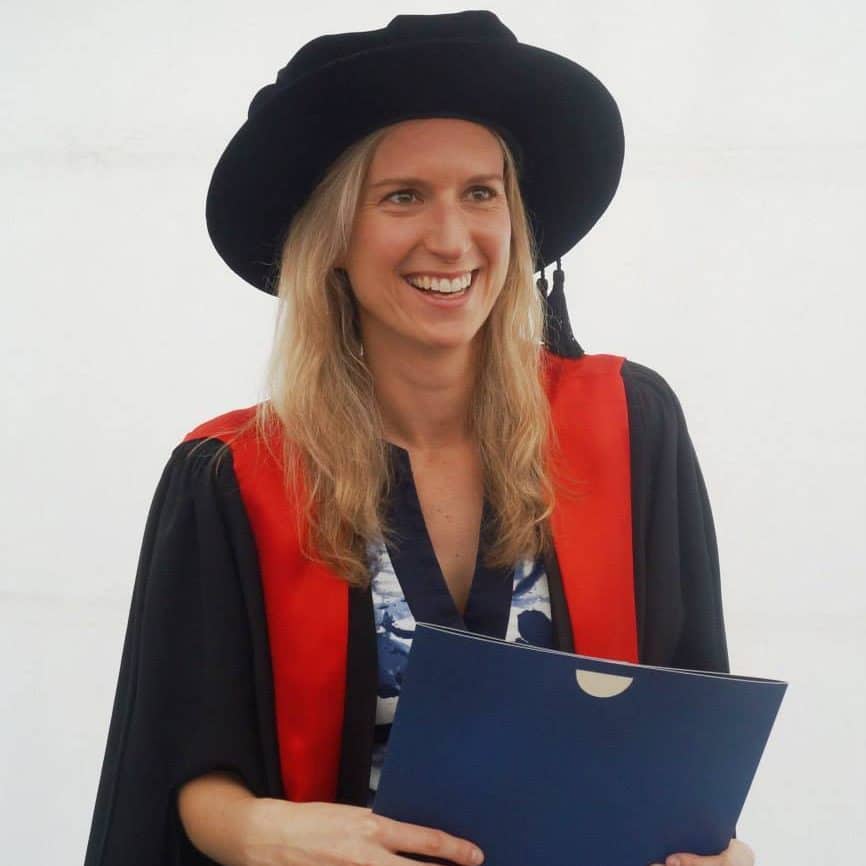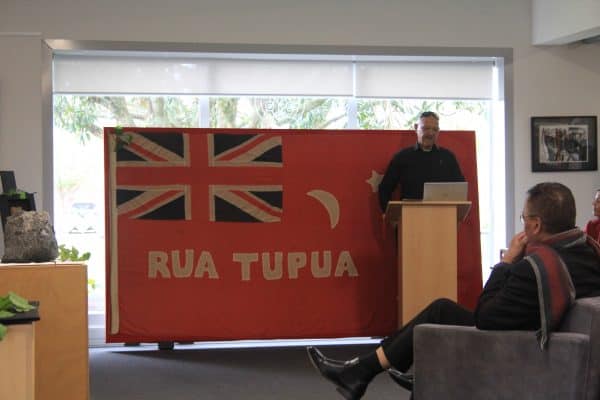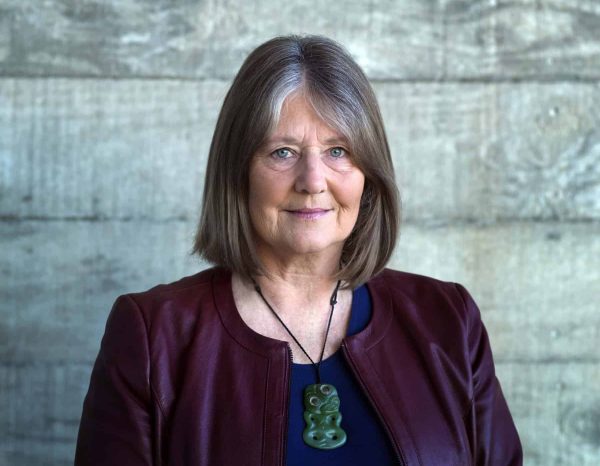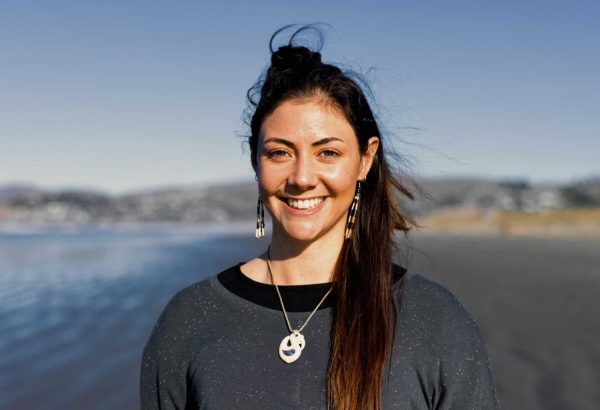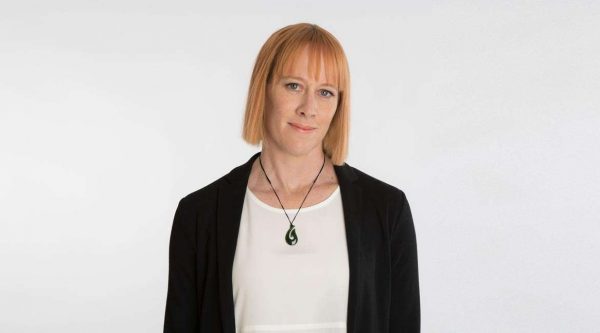Q & A with Dr Sally Potter

Q. Have you always been interested in science? When did you realise you wanted to be a scientist?
I’ve always liked understanding ‘why’ things happen, and enjoy the process of investigation. My favourite movies as a kid were disaster movies, and now being able to spend my days looking into more effectively warning people about hazards is pretty much a dream come true!
Q. What did you study at university, and what was your PhD on?
I completed a Bachelor of Science in Geology at Victoria University, and an Honours degree at Massey University in Volcanology.
My PhD was in Emergency Management (Social Science and Volcanology) through Massey University. My PhD topic looked at the communication of volcano information, particularly for caldera unrest. I reviewed New Zealand’s Volcanic Alert Level system with volcanologists and various stakeholders using social science methodologies, and then implemented the new system with MCDEM in 2014; I investigated how often, and how severely, Taupō volcano has had historical unrest; and I developed a Volcanic Unrest Index to combine the various volcanic monitoring parameters for easier communication and decision-making. I then did a post-doc with MetService looking at the challenges and benefits of impact-based severe weather warnings.
Q. Your recent work has focused on warnings for natural hazards, what drew you to that subject?
I find it exciting looking at warnings – they are the final step in reducing risk to natural hazards. Once you’ve done all the planning and policy changes you can, improved building codes and infrastructure resilience, and people are prepared and are aware of the hazards, and have strong community networks, then all that’s standing between you and a hazard is this little piece of information that alerts you to take action. It might be a natural warning (like earthquake shaking alerting you to a possible tsunami), or come from a colleague, family, TV, or an official agency. By making sure that warning is as effective as possible, it enables people to take the most appropriate action for themselves and their family to stay safe.
Q. What makes a warning effective?
People respond to warnings in different ways, depending on things like:
- if they can sense the event (e.g. see severe weather, hear a roar, feel earthquake shaking, smell smoke);
- what other people are doing in response (if anything);
- whether they receive, pay attention to, and understand a warning;
- their own mindset;
- how threatened they feel from the hazard;
- whether they think they can respond to the event and if that response will be effective in keeping them safe; and
- whether they trust the agency/person and warning.
By providing an effective warning, we can slightly influence some of these factors. So, we can make sure as many people as possible receive the warning and pay attention to it (e.g. NZ recently implemented Emergency Mobile Alerts to quickly reach more people), make sure the warning is easy to understand (language and terminology), help people to understand the threat and impacts that might happen to them personally and to their family, and suggest protective actions that are achievable and effective. The warnings also need to be accurate and consistent between sources.
Q. You were part of a team that recently won the 2019 Excellence in Emergency Communication ResearchAward. Congratulations, and can you tell us a bit more about that?
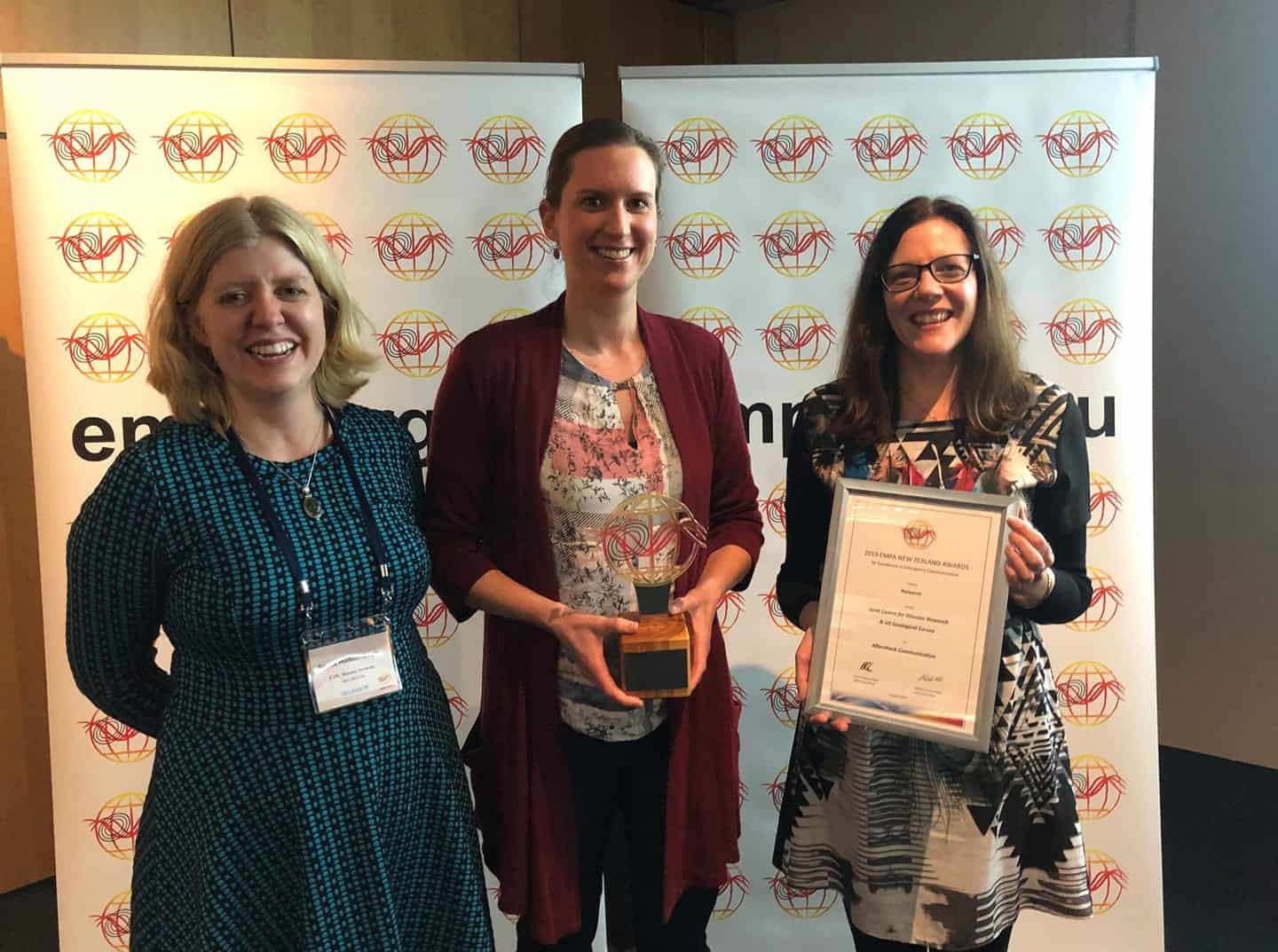
Thanks! The award was from EMPA (Emergency Media and Public Affairs), and the result of an epic 5-year research project that looked at aftershock information needs for agencies and the public following the Canterbury Earthquakes, and how people interpreted and responded to it. Our main findings were that it’s important to include information and training about aftershocks prior to an earthquake; people wanted information in a variety of formats (e.g. maps, tables, graphs, text, analogies) and their needs changed over time; showing empathy in information is important; and that geoscientists need to strategise how to best provide the information before an event happens.
The project was led by Julia Becker (Massey University), and involved researchers from GNS Science (me), Massey University (Emma Hudson-Doyle), US Geological Survey (Sara McBride and Anne Wein), and Charles Darwin University (Douglas Paton).
Q. You’re co-leading the Weather theme for Phase 2 of the Resilience Challenge. What drew you to working on the Challenge?
I am excited to be working with such a multidisciplinary team to conduct underpinning research on hazard and impact models for severe weather, landslides and wildfire; investigate engineering solutions; as well as utilise social science to improve mitigation measures with stakeholders and communities. It also gives me an opportunity to work with stakeholders and the wider weather community, as well as the researchers in the other themes, to help link research to practice. It works in well with my role of co-leading the Communication Task Team for the World Meteorological Organization’s High Impact Weather research programme, so that I can align our NZ research with global research directions.
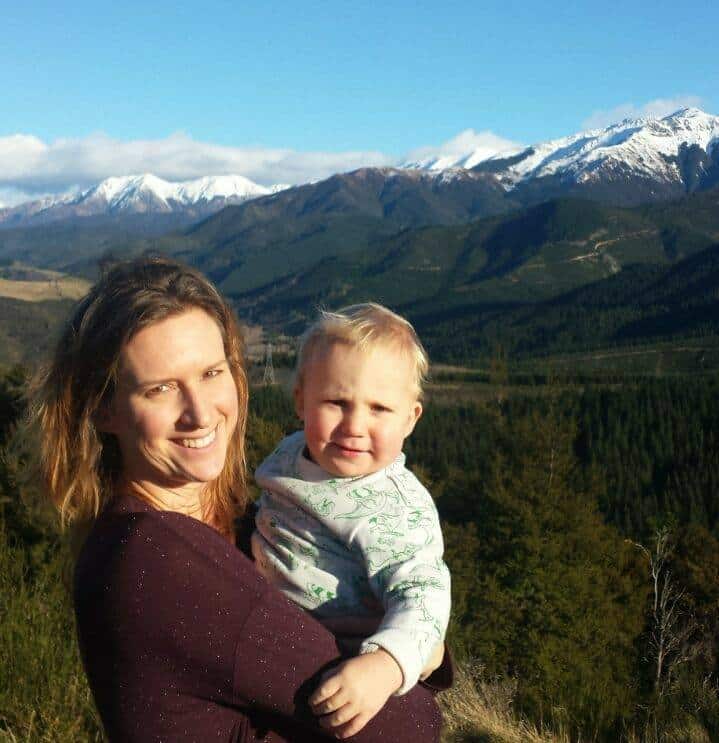
Q. What are your future aspirations?
A bit of stretch goal for me is to eventually look into warnings across all of the natural hazards – the trickiest one would probably be warning systems for meteor impacts! I’d also like to investigate more effective warnings to all parts of our communities, and their diverse needs.
And my overarching goal is to maintain a careful work-life balance as I have two young sons.
